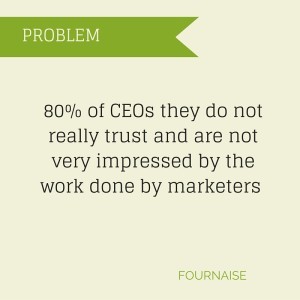 Marketers know that Marketing Automation delivers real value, yet they delay with choosing the platform and implementing it, Andrew Jones (Venture Beat) says. Why? One of the reasons is numerous understatements and misconceptions grown around the problem. That’s why we would like to organize knowledge on Marketing Automation: show how it works, what features it offers and bust popular myths.
Marketers know that Marketing Automation delivers real value, yet they delay with choosing the platform and implementing it, Andrew Jones (Venture Beat) says. Why? One of the reasons is numerous understatements and misconceptions grown around the problem. That’s why we would like to organize knowledge on Marketing Automation: show how it works, what features it offers and bust popular myths.
How does it work?
Marketing Automation Platform (MAP) identifies users on the website and monitors their behavior using cookies. Then it allows to personalize communication basing on collected information. For example, it segments the contact base according to users’ interests or sends 1-to-1 emails tailored to each visitor’s history.
10 Commandments of Email Marketing. Get a Free Ebook
The system helps you not only to manage contacts better, but also to boost efficiency of your marketing in all channels, such as:
– email marketing: instead of sending blast “on size fits all” messages, tailor your emails to particular user’s interests and needs,
– the content of the website: each visitor can see customized version of your website, with relevant offers (items similar or complementary to previously watched or bought). You can also personalize contact forms and create dedicated landing pages,
– RTB ad networks: personalize retargeting campaigns and reach users who don’t react to your emails,
– Social media: when you actively monitor customer’s interactions with the brand in social media, it’s easier to deliver relevant offers. Also, integration with Facebook Custom Audiences helps you target ads more precisely,
– Mobile app: thanks to advanced solutions such as APPmanago you can track the behavior of your mobile app’s users to adjust notifications and emails. Further, you can integrate MAP with Mobile Marketing Automation tool to build even more accurate customer profile.
– Analytics: the system allows to examine in detail how effective each campaign, action or rule is, so you can optimize costs.
Rules of automation
Ok, you might ask, but how does it all happen?
In the system, you set rules of automation. In other words, you define that if a given event occurs, the platform will automatically react to it, so a marketer doesn’t have to perform it manually. For example, on customer’s birthday, the system will automatically send her greetings and a coupon, so you don’t have to write and send that e-mail manually. But automation involves far more complex actions, based on myriads of data it gathers. Below we describe the vital features of most MAPs.
Scoring
Scoring means points assigned to each user automatically when she performs a pre-defined actions, such as:
– watching demo,
– liking company profile on Facebook,
– purchase.
That way system automatically measures user’s engagement. All marketer has to do is to decide for which actions points will be assigned. That mechanism helps spot hot leads immediately (so salespeople can prioritize leads) and create dedicated campaigns to loyal customers or to beginners.
Segmentation
What to do to boost readership of your emails? Send relevant messages. Don’t assume that all your contacts like the same, but rather divide them into groups, such as:
– users interested in a given category of products,
– participants of a loyalty program,
– residents of a given city/ country,
– users who downloaded given material.
To segment your contacts, use tags. Naturally, one user can have more than one tag.
Then you can address email, SMS or social media campaign precisely and send your message to people who might find it interesting. It builds a deep relationship with customers because you prove that you respect their time and know their needs.
Lead Nurturing
79% of leads never convert into sales (Marketing Sherpa), so what are you going to about them? Lead Nurturing is the answer.
It’s a cycle of educational messages, most often a couple of emails. Send it to a person who has just given you her data. That way an initially interested person gets the vital knowledge to help her decide. In the beginning, Lead Nurturing was a B2B only strategy, as the sales process is longer and requires more research there.
Yet the practice was quickly taken over by B2C and E-commerce: marketers send welcome cycles, where they give a tour around the e-store, talk about brand values and share tips. Today’s consumers like to be well-informed. It also translates into sales: users who were nurtured make purchases bigger by 47% when compared to not-nurtured leads (Annuitas Group).
Read how to design Lead Nurturing.
Dynamic 1-to-1 emails
Dynamic 1-to-1 emails are all messages sent to a user individually, including welcome messages, birthday messages, or abandoned shopping cart rescuing emails (as much as 67% of shopping carts are left behind, KISSmetrics claims, so that type of messages is essential). According to Experian, 1-to-1 emails drive 2-5 x higher revenue.
Dynamic content
45% of customers prefer websites with personalized content (Marketing Profs). It means you should implement banners with offer adjusted to individual user’s history and interests. Suggest similar or complimentary products, or potentially useful posts from your blog. Customize as many banners as possible.
One of the most efficient tools of that kind is personalized contact forms to boost lead generation.
Effects
 Thanks to Marketing Automation you will gain:
Thanks to Marketing Automation you will gain:
– Possibility of measuring the effectiveness of your actions: the system will help you optimize costs by telling you which actions, channels or rules of automation deliver the highest revenue and on which should you focus. It also delivers metrics that allow marketers to show their quantitative contribution to the company. It’s vital in the light of latest research indicating that CEOs don’t trust marketers (Fournaise),
– Increased retention: you will build a relationship based on delivering real value to customers, what translates into higher sales,
– Increased amount of lead generated: thanks to personalized contact forms,
– Improved cooperation between sales and marketing: Marketing Automation helps marketers and salespeople find a common language to deliver smooth buyer’s journey and optimize workflow in the company.
Marketing Automation Myths
1. Marketing Automation is expensive and reserved to B2B companies, myths say. It’s time to bust them. – Marketing Automation is only for B2B: although in the beginning mostly B2B companies used such solutions, now we’re all equal. E-commerce or B2C companies are eager to educate their customers and grow loyalty with Marketing Automation. In general, the difference between marketing in B2C and B2C blurs.
2. Only big companies can afford Marketing Automation: the market of marketing technology is so wide that a small company with easily find a solution that suits its needs, workforce and budget. Overworked owners of small businesses will greatly benefit if relieved from repetitive, mechanical tasks. You can use saved times for things you can’t automate: creative or strategic work.
3. Marketing Automation makes you sound like a robot: definitely not! All the time you are in charge and define the content, style, frequency and mechanisms of communication. Moreover, thanks to advanced analytics you can deliver more relevant messages because you know exactly how users respond to your actions.
Marketing Automation helps you deliver value
The idea of Marketing Automation stems from a need to provide the right message, to the right person, in the right time. That tool puts an end to bulk “one size fits all” newsletter or aggressive, unwanted banners, and builds a new foundation of a customer-brand relationship. In the light of a progressive consumer emancipation (she can go through 80% of the shopping process on her own), the role of marketers changes: they should accompany users doing their research.
 Follow
Follow
















